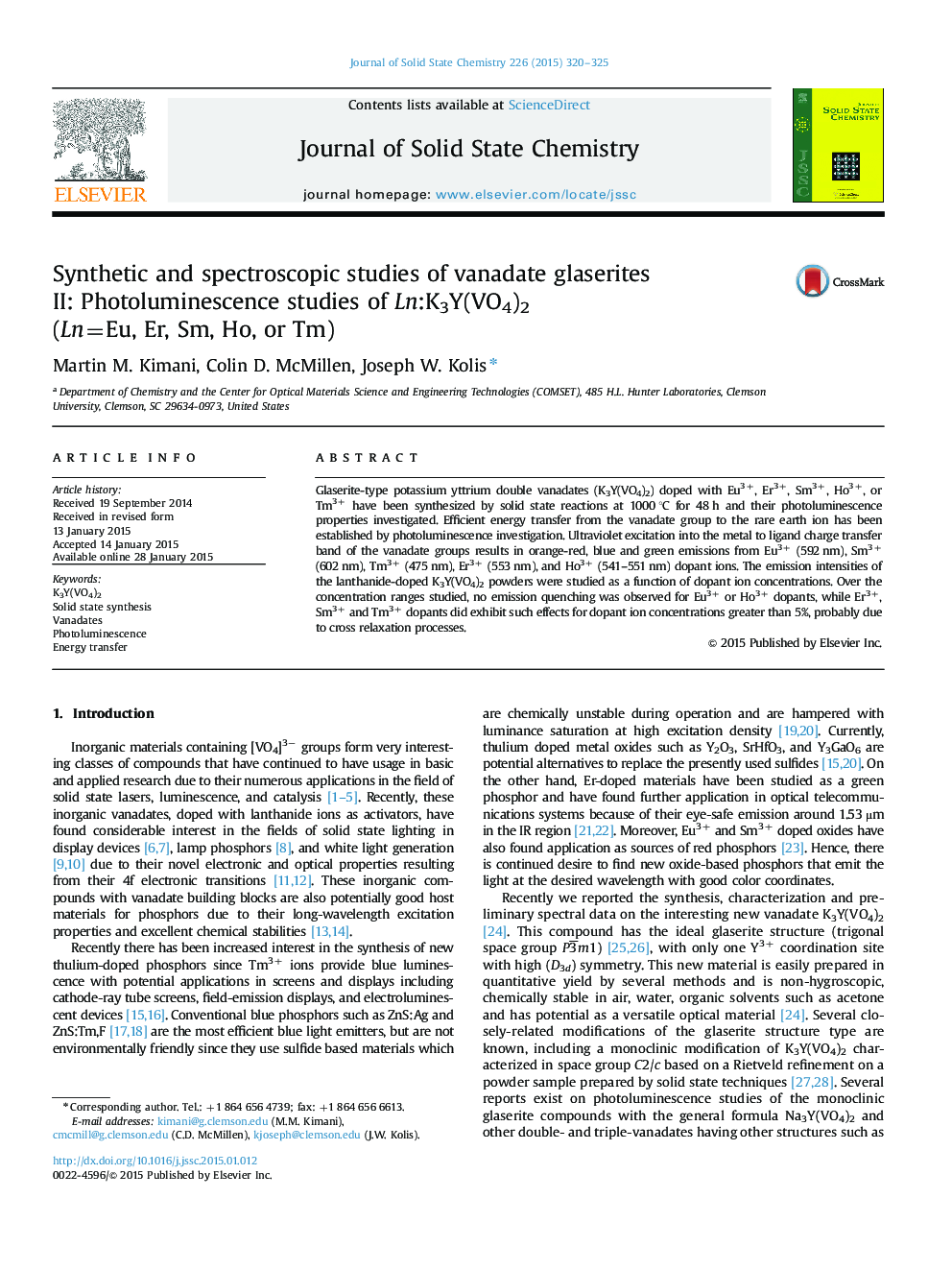| Article ID | Journal | Published Year | Pages | File Type |
|---|---|---|---|---|
| 1328970 | Journal of Solid State Chemistry | 2015 | 6 Pages |
•K3Y(VO4)2 doped with Eu, Er, Tm, Sm, or Ho were synthesized via solid-state reactions.•Photoluminescence properties are investigated.•The lanthanide doped K3Y(VO4)2 compounds revealed efficient energy transfer from the vanadate group to the rare earth ions.•The presented compounds are promising materials for light display systems, lasers, and optoelectronic devices.
Glaserite-type potassium yttrium double vanadates (K3Y(VO4)2) doped with Eu3+, Er3+, Sm3+, Ho3+, or Tm3+ have been synthesized by solid state reactions at 1000 °C for 48 h and their photoluminescence properties investigated. Efficient energy transfer from the vanadate group to the rare earth ion has been established by photoluminescence investigation. Ultraviolet excitation into the metal to ligand charge transfer band of the vanadate groups results in orange-red, blue and green emissions from Eu3+ (592 nm), Sm3+ (602 nm), Tm3+ (475 nm), Er3+ (553 nm), and Ho3+ (541–551 nm) dopant ions. The emission intensities of the lanthanide-doped K3Y(VO4)2 powders were studied as a function of dopant ion concentrations. Over the concentration ranges studied, no emission quenching was observed for Eu3+ or Ho3+ dopants, while Er3+, Sm3+ and Tm3+ dopants did exhibit such effects for dopant ion concentrations greater than 5%, probably due to cross relaxation processes.
Graphical abstractSynthesis and photoluminescence in vanadate glaserites.Figure optionsDownload full-size imageDownload as PowerPoint slide
